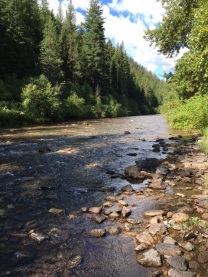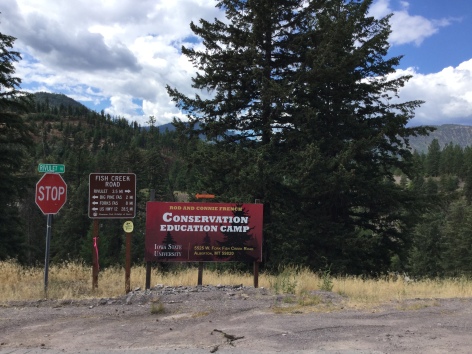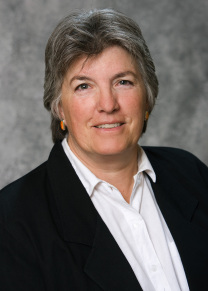AMES, Iowa – Professor Sue Blodgett is busy.
Not the kind of busy that comes from chairing two departments (entomology and natural resource ecology and management) at Iowa State. Not even the kind of busy that comes from her leadership role in the Iowa Monarch Conservation Consortium, which is working to enhance butterfly reproduction and survival in the state.
In her fifth year of teaching and research at Iowa State, she and other faculty are working on a new goal: Developing and adapting courses to be held at the new Rod and Connie French Conservation Education Camp, nestled in the remote and rugged Bitterroot Mountains west of Missoula, Montana.
Beginning in summer 2017, the French Conservation Camp will be equipped to accommodate up to 60 ISU students and instructors for as many as three concurrent field courses in forestry, fisheries and wildlife.

French Conservation Education Camp, Montana
A legacy of philanthropy
The camp was established through a $4.1 million donation by the late Rod French and his wife, Connie, of Des Moines, longtime supporters of and donors to Iowa State. As Rod’s health declined late last year, he discussed gifting his expansive, commercial “Hole in the Wall Ranch” to the ISU Foundation with ISU President Steven Leath.
"We are so grateful to Rod and Connie French for this extraordinary gift and their legacy of philanthropy to benefit Iowa State," Leath said. "This camp will help greatly expand the breadth and scope of our students’ education, and provide invaluable experiential learning opportunities. It’s a very similar model to our successful geology field camp in Wyoming, which Iowa State has been operating since 1957.”
"I am honored that the ranch, which is so dear to our hearts and holds so many wonderful family memories, will now be used as a student learning facility," said Connie French. "I look forward to the day when students are able to create their own memories at the camp, while also making important discoveries in conserving the environment. Rod was personally touched that President Leath had a passionate vision for this facility. Under his leadership, students and faculty will be able to learn more about conservation and the environment, not only for this region, but across the globe."
A diverse ecosystem, opportunities for local collaboration
Blodgett said the camp, surrounded by the Lolo National Forest, will immerse ISU's predominantly Midwest students in the diverse ecosystem of western Montana.
“This will be a fantastic advantage for our students,” Blodgett said. “The facilities are in wonderful shape. The camp experience, connections to state and federal agency professionals, and collaborations with a variety of conservation organizations will provide a high-quality educational experience for our forestry and animal ecology majors. This is a long-term aspiration of the department. Skills and experience gained will add to our students’ career success.
“The camp offers many opportunities for students to work with natural resource professionals studying the region's natural resources, including a variety of forested areas, big game habitat and migration corridors, and wildlife management areas,” she continued. “Fish Creek is home to several fish species including populations of bull trout (a threatened species) and Westslope Cutthroat trout (species of concern). Iowa State students will have the opportunity to participate in wildlife surveys, forest stand evaluations, regeneration studies and service projects with local collaborators, applying fundamental principles and concepts of forestry, wildlife and fisheries habitat to an outdoor classroom.”

Looking ahead
In addition to planning the classes to be held at the French Conservation Camp next summer, there's more work to be done. The camp doesn't yet have access to the power grid, and students need reliable internet access to conduct their research. In addition, important meetings with community members and state and local agencies continue to be held to build support for the project.
Instrumental in that coordination is Tony Schoonen, chief of staff for the Missoula-based Boone and Crockett Club, of which President Leath is a member.
"Tony really is helping to build trust between the university and local stakeholders who are interested in conservation," Blodgett said. "He's knowledgeable about the area and is helping with communication between the Montana conservation community and us.”
The Boone and Crockett Club is the oldest wildlife conservation organization in North America. It has four operating university programs (with the University of Montana, Texas A&M, Oregon State University and Michigan State University), three of which have an endowed professorship, and one joined by an extension specialist and an executive-in-residence.
The natural resource ecology and management department is developing a proposal for an Iowa State Boone and Crockett Professorship, Blodgett noted, “that will strengthen our natural resource research and teaching programs. Together with the camp, new internships, research experiences and career-building opportunities will enhance student success.”
The ISU Foundation maintains ownership of the property and buildings that make up the French Conservation Camp, leasing it to the university for academic instruction and hands-on learning opportunities.
